What to Wear Skiing: Women’s Ski Apparel Guide
This is the exact layering system I use and the clothes I wear to say warm, dry, and comfortable while skiing.

Layering properly for skiing is a bit of an art, and if done wrong, it can really affect your enjoyment of the sport. Being overdressed or underdressed while skiing can be majorly uncomfortable, as I’ve learned over the years.
The key is finding skiing apparel that will be warm, weatherproof, and windproof, but won’t get sweaty or stinky. You also want a full range of movement so you aren’t hindered by your ski clothing.
If you are a beginner skier, in this post you’ll learn the basics of what to wear skiing (or snowboarding), along with the list of ski layers that I wear. Keep in mind that I’m always adjusting these layers based on temperature, wind factor, and cloud cover.
There’s no doubt that getting into skiing takes some investment. Quality women’s ski apparel is pricey, but once you buy the right gear, it will last you for years.
This post may contain affiliate links.
Ski Jacket
A durable, windproof, and waterproof ski jacket is key to staying warm and dry while skiing. Here are some factors to look for in a ski jacket:
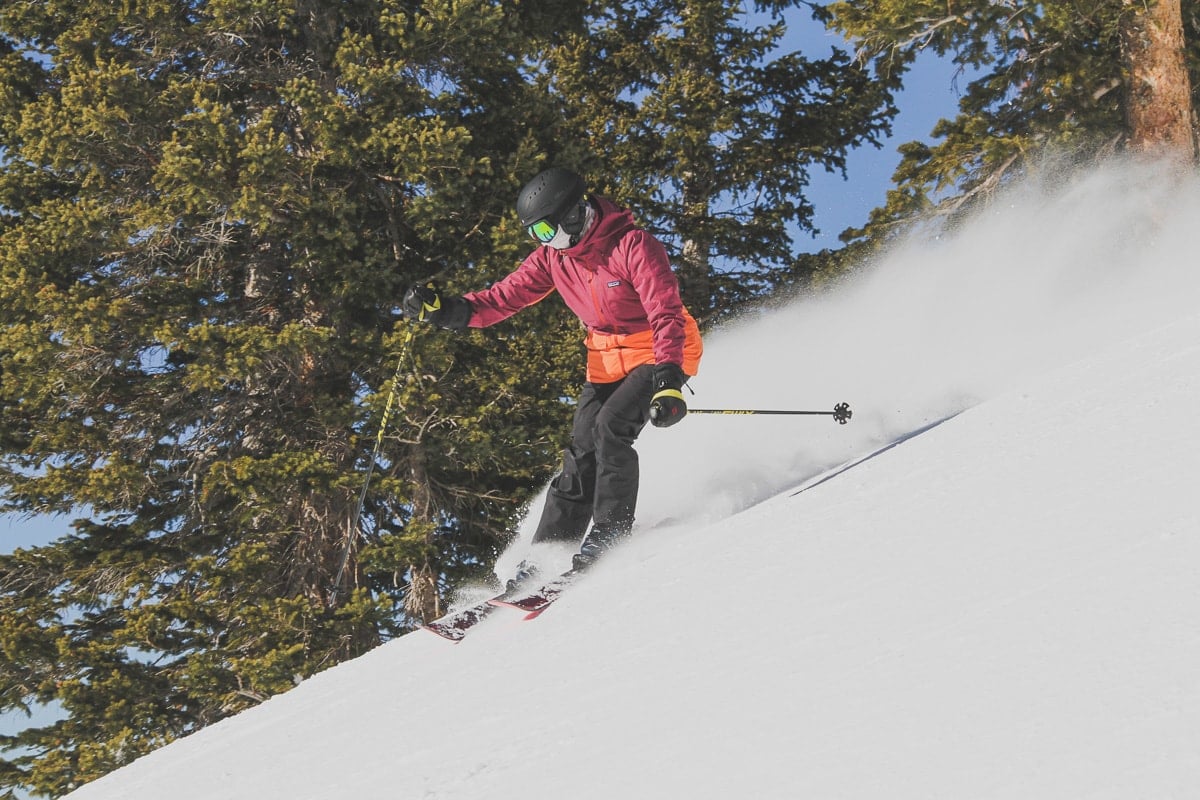
Recommended Ski Jacket
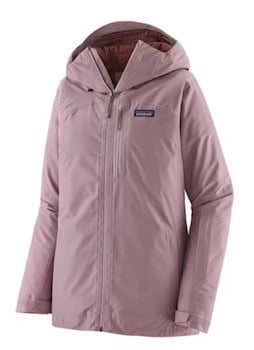
Patagonia Insulated Powder Town
The Patagonia Insulated Powder Town Jacket is the my favorite ski jacket I’ve owned. The outer layer is durable and waterproof while the lightweight inner insulation keeps you warm and dry and wicks away sweat. It’s not too bulky or thick, so I can layer underneath without feeling restricted, and the pit zips allow for quick ventilation on warmer afternoons. The hood is helmet-compatible, which is convenient for those extra windy days.
Save this post!
Enter your email & I'll send this post to your inbox! You'll also receive my weekly newsletter full of helpful advice for planning your adventures.
Ski Pants
Like your ski jacket, you want your ski pants to be reliably waterproof, especially if you’re a beginner skier when you might be spending more time sitting in the snow. Here are some considerations for ski pants:
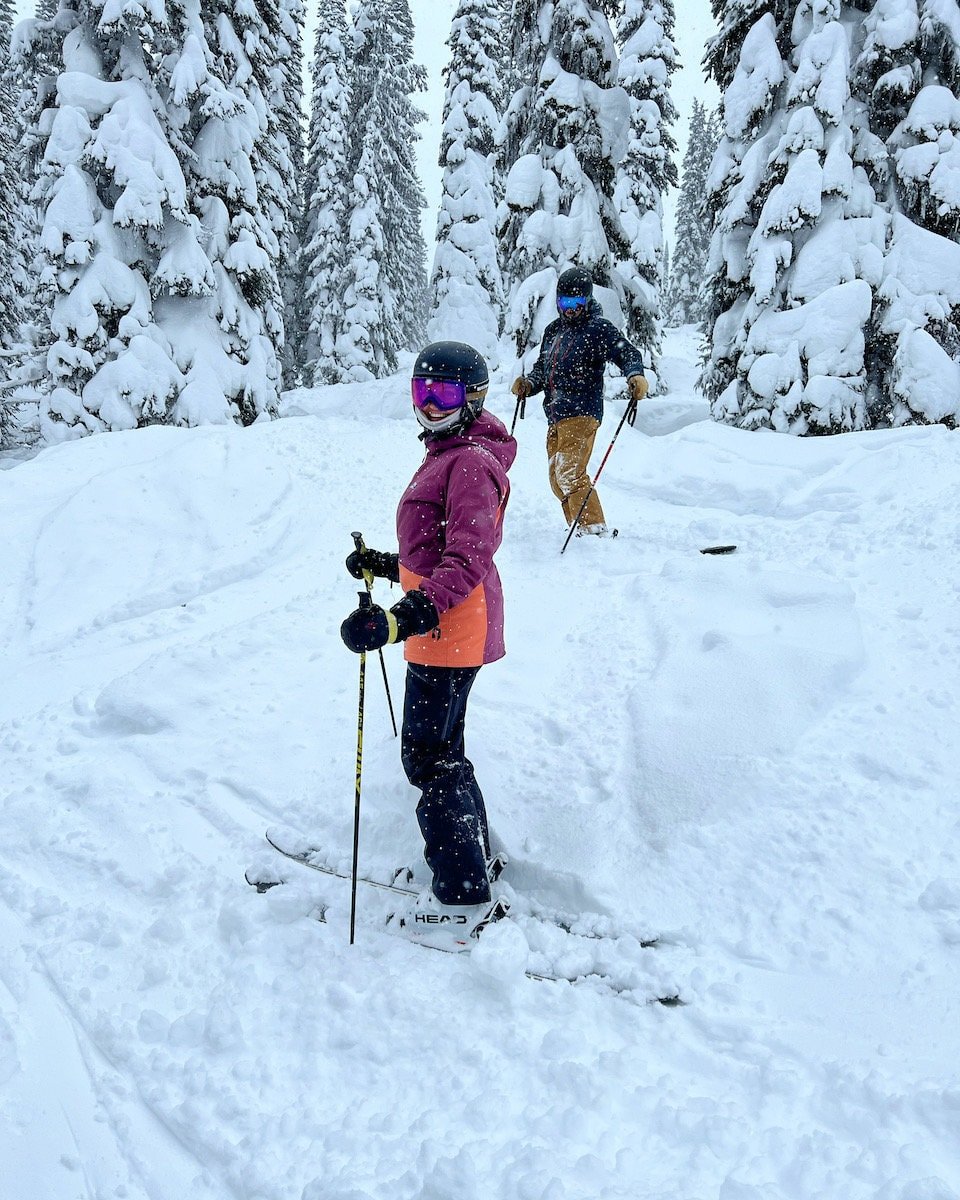
Recommended Ski Pants
Arc’teryx Sentinel Pants
When I ski, I wear the Arcteryx Sentinel AR Pants. They are pricey (I scored mine on sale at the end of the season), but these should last me no less than a decade. They are hardshell, Gortex-lined pants with fully seamed waterproof zippers. They are super windproof, but they aren’t insulated meaning you’ll want a solid base layer (or 2) underneath. During spring, they have a side zipper so you can vent them if you’re hot, making them versatile for other winter activities too.
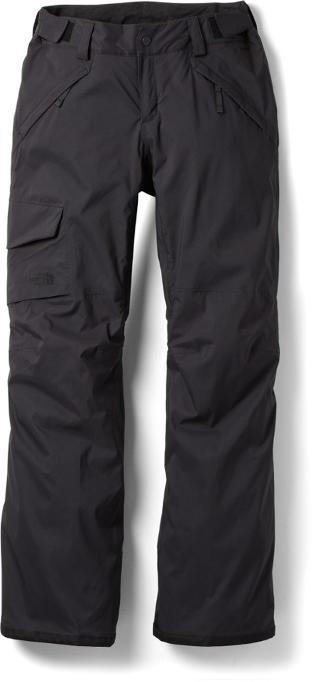
North Face Freedom Insulated Snow Pants
If you want something more budget-friendly, I recommend the North Face Freedom Insulated Snow Pants. These are the ski pants I used when I first started skiing. They are basic insulated ski pants that will keep you warm and dry in moderate weather conditions.
Skiing Base Layer
The first thing you want to put on is long johns. This next-to-skin base layer is intended to regulate your body temp and wick away sweat while you’re skiing. Base layers come in different weights from lightweight to heavyweight and are intended to be combined depending on conditions.
Base layers are made from a variety of materials, and the key is to avoid cotton since it tends to hold onto moisture and doesn’t dry quickly. I recommend merino wool or synthetic materials, like polyester.
If it’s really cold, I may wear two base layers under my mid-layer which I’ll talk about below.
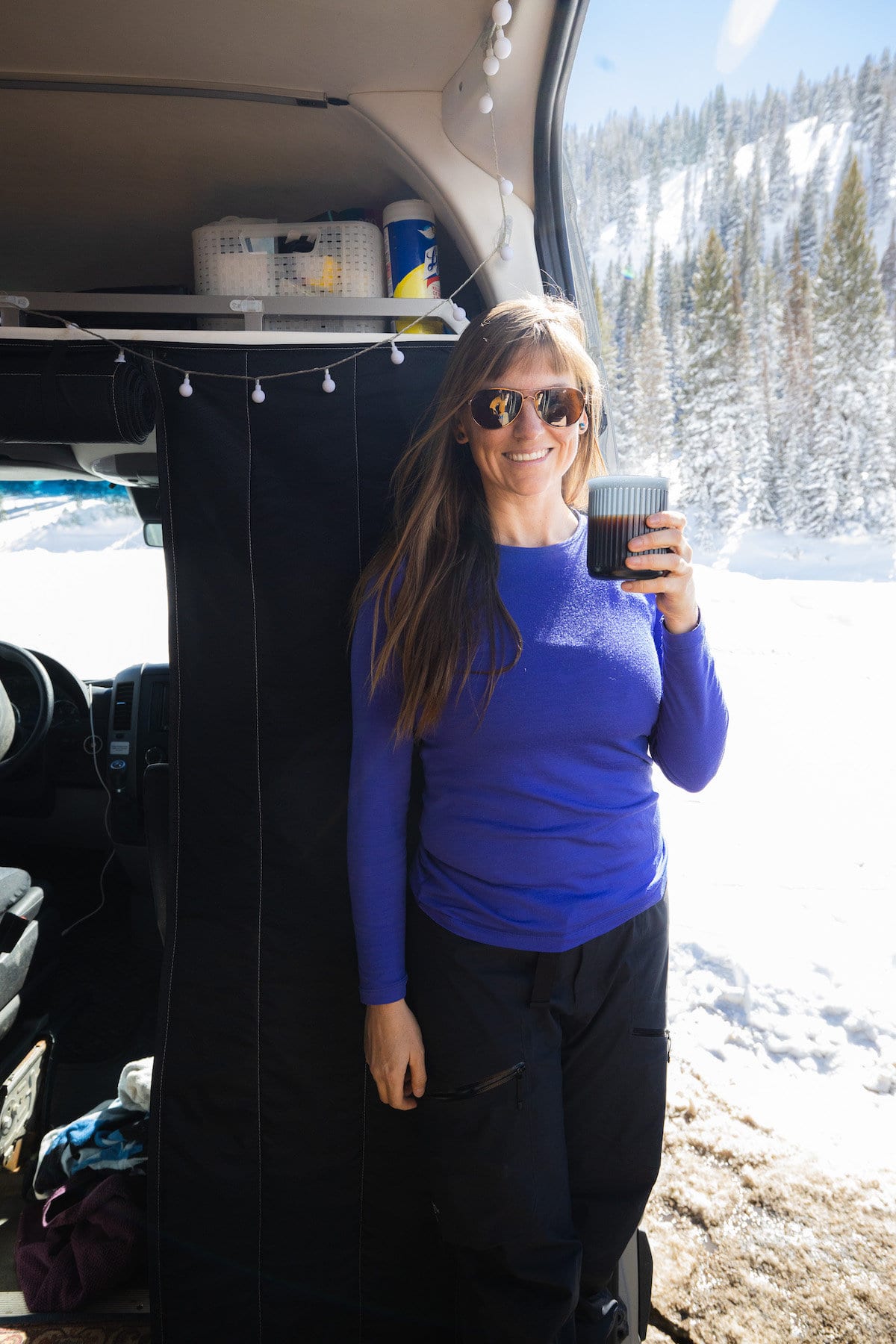
Recommended Base Layers
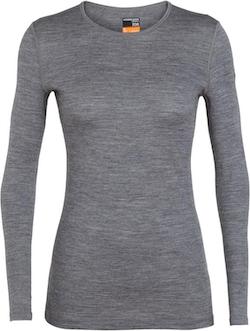
Icebreaker Oasis 200 Crew top
I wear a wool baselayer that wicks sweat. My go-to is the Icebreaker Oasis 200 Crew top. I’ve worn it more than 100 days, and it’s a lot more durable that other wool baselayers I’ve tried from other brands. It’s also super soft and doesn’t leave you feeling itchy like wool can sometimes do. Just be careful not to dry it, or it will shrink.
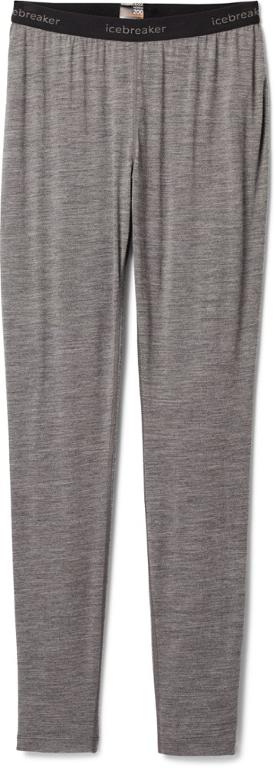
Icebreaker Oasis 200 leggings
I also wear Icebreaker long johns on my legs. The Icebreaker Oasis 200 leggings keep me warm (but not too hot), and they don’t stretch out, even after many days of wear. If it’s really cold, since my ski pants aren’t insulated, I sometimes double up on these.
Mid Layer Jacket
On top of my base layer and underneath my ski jacket, I wear a mid-layer jacket. Again you’ll want to avoid cotton, and I’d also avoid down. Down doesn’t dry quickly, and it’s also less breathable than synthetic materials. Breathability is really important for your mid-layer because there is no way to vent it underneath your ski jacket.
Typically mid-layer can be a fleece, a synthetic jacket, or a thicker wool layer. I also prefer a mid-layer without a hood in order to reduce bulk under my ski jacket.
During warmer spring skiing, you may not need to wear a mid-layer.
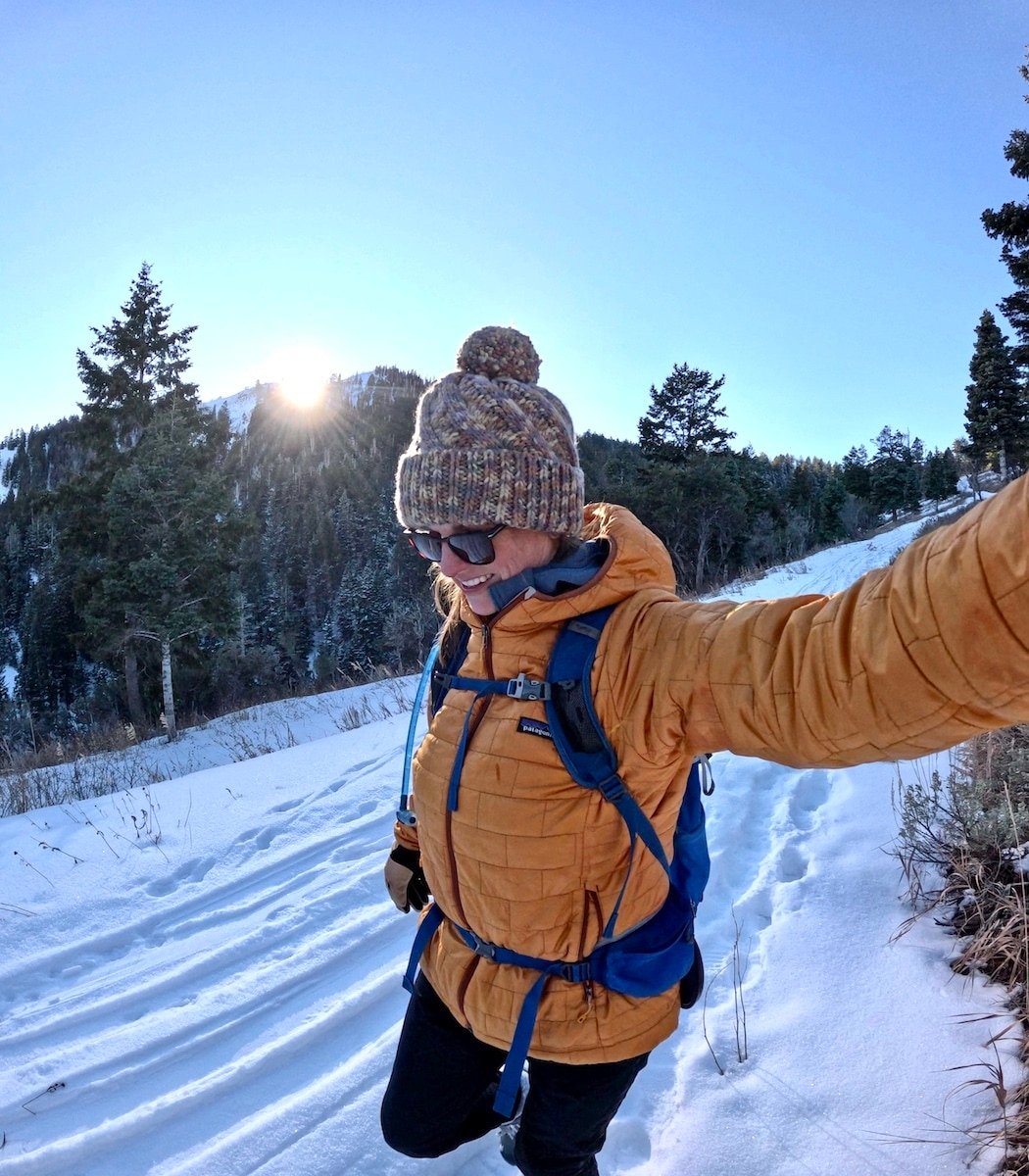
Recommended Mid-Layer
Patagonia Nano Puff Jacket
When I’m skiing, I wear the Patagonia Nano Puff as my mid-layer. It’s very thin and light, so it doesn’t feel bulky or uncomfortable layered under a ski jacket. At the same time, it’s warm, breathes well, and provides extra wind protection. See my full Patagonia Nano Puff review for more thoughts on this jacket.
Ski Socks
Despite popular belief, thinner socks are better than thick socks when it comes to skiing. Thinner socks allow for a better fitting boot which will give you more control over your skis. Further heavy ski socks can result in sweaty feet, which actually make your feet colder than if you were wearing a thinner ski sock.
If your feet tend to get really cold like mine, I highly recommend you invest in some boot heaters. And for what it’s worth, I much prefer boot heaters to heated socks. Heated socks are thick, and you can feel the wires running through the sole of the sock, which I found very distracting and uncomfortable.

Recommended Socks
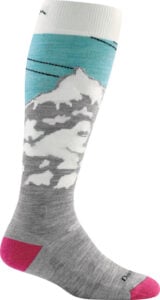
Darn Tough Lightweight Ski Socks
I personally like Darn Tough’s ski and snowboard socks. I wear the lightweight ones, which have padding in all of the right places, like in front of the shin and the heel. They also stay glued in place throughout the day, and I never experience any shifting around in my boot.
Skiing Accessories
In addition to all of the layers, you always want to wear a helmet, goggles, gloves, and a neck warmer when you are skiing. Below is a checklist of the accessories you need.
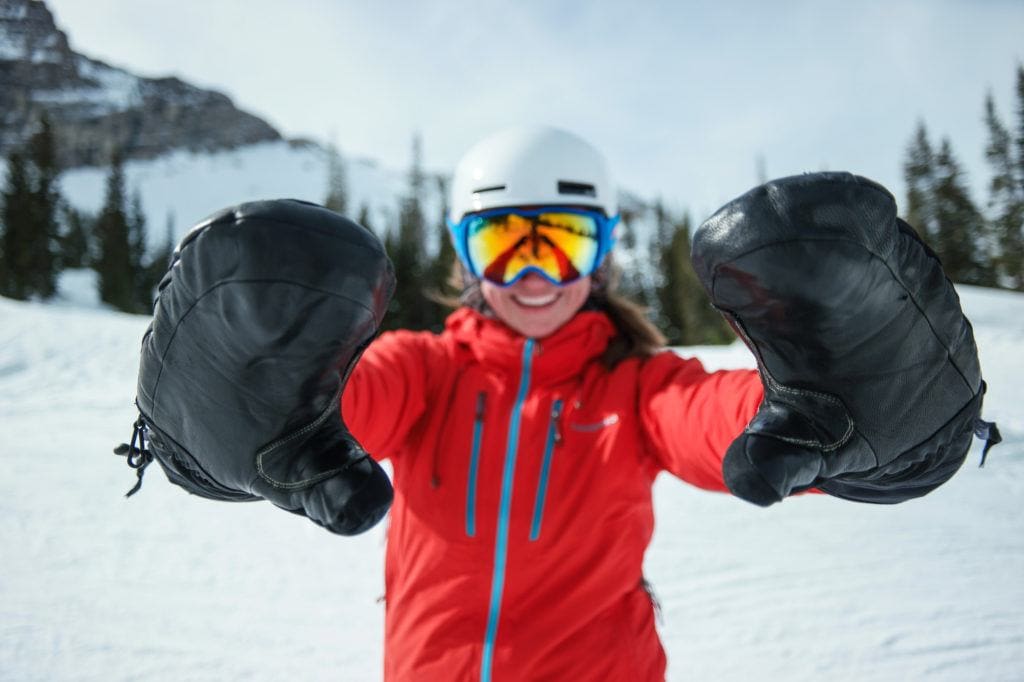
More Winter Tips
Save this post to Pinterest
Got any questions or your own tips about what to wear skiing? Leave a comment below!

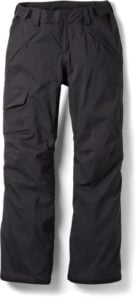

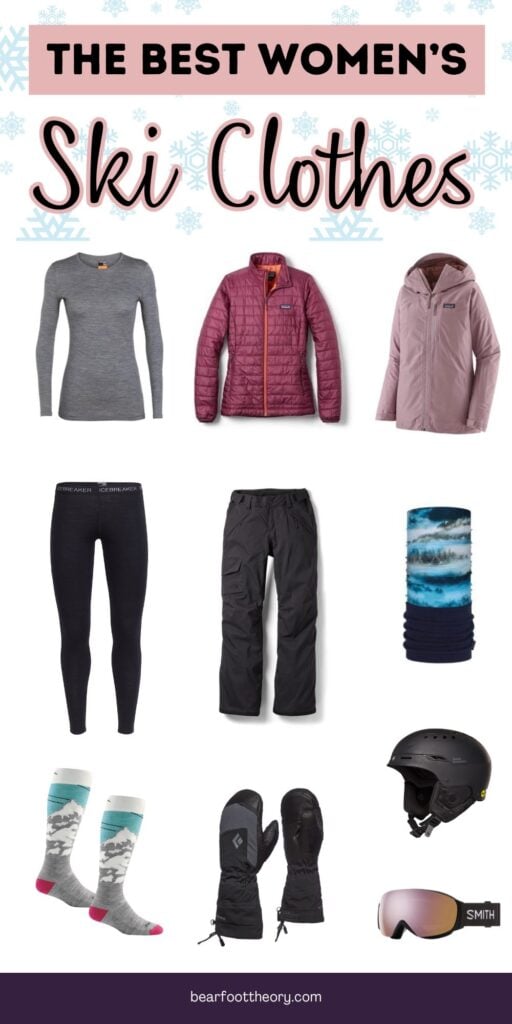



Wonderful Post…!
I like your ski wearing tips and ideas. This is very helpful Post for every ski beginners. Ski wear is most important for skiers because of its ride more easy and comfortable play. It’s protected from cold wheater. I love your Post. You are so creative.
Thanks for sharing your Post.
Hi,
I am preparing for my first skiing season. I am 26-year-old women who is going to have her first skiing trip. We are going to Slovakia. At the beginning of December, I am going to the US and want to buy myself a good skiing jacket. I have done a little bit of research and found this “Arc’teryx Women’s Sentinel Jacket” (number 2 in this list: http://www.bestsnowgear.com/best-womens-skiing-jackets/). Actually, I have found good reviews on several sites, so I believe it is a good choice.
First of all, I love the plain minimalistic design. I don’t like these colorful hip skiing clothes. Maybe they are nice, but not for me.
Second, I trust the reviews, especially the ones on Amazon.
The price is not low and I like it. A cheap thing can’t be well-made.
Do you have any comments on my choice? Will appreciate any input. I am buying the jacket for at least 3-4 seasons, therefore I need to have a durable and comfortable piece of wear.
Any input appreciated.
Arcteryx makes great gear. The jacket you mention is a shell so you’ll need to layer underneath it since the shell on its own won’t be very warm.
I currently ski in the Patagonia Nano Stretch Storm Jacket skiing and I love it. It isn’t quite as bombproof as the Arcteryx but it has a lighter layer of insulation so it will be a bit warmer. You can check it out here: https://goo.gl/iB7aqe
Nice article. My best discovery was merino wool. Me and my family every year we go skiing to Alps. And we all wera merino wool clothes. We bought shirt and pants for my wife, kids and myself from green-rose.uk.com and the clothes are wonderful. They keeps us warm but does not let us sweat. I recomend merino to every skier 🙂
The information you shared here is very informative. Thanks for sharing such a great post with us.
I believe wool products to be a much better choice for the environment than synthetic petroleum
man made ones. Sheep keep family farms alive and productive thus lands in a rural state. They produce fiber, meat, and fertilizer. I will always use wool products rather than ones made of highly processed petroleum. Since I spin, knit and obtain fibers close to where I live this is a much smaller ecological footprint than using products manufactured in large factories from finite natural resources. Wool clothing lasts many decades so doesn’t need to be replaced often. Please rethink your recommendation on this point.
Peggy – I can’t speak to the farm near your house, but I am moving towards a vegan lifestyle which means I’m beginning to transition away from a majority of animal products, especially when there are good alternatives. Industrial-scale wool that meets worldwide demand is not necessarily eco-friendly. There is a lot of waste (which contributes to climate change), the system requires a ton of inputs (food and water), and the animals are not guaranteed to be treated humanely. I agree synthetic often comes with its own problems, but many companies are moving towards recycled materials as alternatives. I also believe the outdoor industry needs to do better all around. If the consumer demand eco-friendly synthetic products not made from animals, the companies will respond to that via innovation.
I am all for saving the animals, Gods creatures❤️
Hi Kristen,
You are a skiing enthusiast I guess. You providing I depth info about snowboarding. I personally prefer less good quality protections while snowboarding. It is always fun if we opt for safety gear. Does anyone use siddhiwear headbands?
Do you have any recommendations for a warmer synthetic puffy mid-layer? I find I am often cold snowboarding unless I am riding more difficult terrain where I am working harder. It’s been a cold January here in VT and I find I am wearing 5 layers on top to keep from getting too cold. I am hoping to reduce the number of layers but get better quality and warmer options that are still breathable yet versatile for different temperatures. I have an old synthetic puffy from Isis that is more than a decade old but back in the day was considered one of their warmer mid-layers. I just purchased the Helly Hansen Lifaloft puffy yesterday but am questioning if it will be enough to replace two of my layers. The Helly is supposed to be warmer than the Patagonia Nano but not sure if it is enough. Some of the reviews of the Patagonia Micro were not as good as the Nano so I initially have steered away from it. Thoughts? Any others I should consider? Thanks!
Hi Tawny, we haven’t tried the Helly Hansen Lifaloft puffy, so I can’t speak that jacket. I love the Patagonia Nano, but if you’re looking for a warmer option the Patagonia Macro Puff might be a good option. I have details on that jacket, plus our other favorite synthetic puffy’s, in this blog post: https://bearfoottheory.com/best-synthetic-down-jackets-women/
Good luck on your search!
Great content! Keep on posting.
Thanks for reading!
Thank you for this comprehensive guide on what to wear skiing, Kristen Bor! As someone who is new to winter sports, I greatly appreciate the detailed information and tips you provided.
Choosing the right skiing apparel is indeed crucial for staying warm, dry, and comfortable on the slopes. Your emphasis on finding clothes that offer both warmth and breathability is spot-on. It’s important to strike a balance between staying dry in snowy conditions and allowing proper ventilation to prevent overheating. The suggestion of opting for a waterproof outer layer made of materials like Gortex is valuable, as it ensures protection against snow and spills.
I also found your insights on outerwear options, such as deciding between an insulated jacket or a shell, quite helpful. Understanding that a shell alone may not provide sufficient warmth and requires additional layers underneath is essential for new skiers like myself. It would be beneficial to learn more about the layering system and what types of base layers and mid-layers complement different outerwear choices.
Additionally, I noticed you mentioned skiing accessories in the table of contents but didn’t delve into them in this article. I’m curious to know what accessories you recommend for skiing, such as gloves, hats, goggles, and socks, as they play a significant role in keeping skiers comfortable and protected from the elements.
Lastly, as you mentioned that skiing clothes can be pricey but worth the investment, it would be great to have some tips or recommendations on finding quality apparel at a reasonable price. Are there any specific brands or stores you recommend for ski apparel that offers a good balance of quality and affordability?
Thank you again for this ultimate guide on women’s ski apparel. It has provided me with valuable insights as I prepare for my upcoming skiing adventure. I look forward to reading your future articles and learning more about winter sports.
Hi Joyit, if you click on “skiing accessories” in the table of contents, it’ll automatically take you to that section of the article where I give specific recommendations for hats, gloves, goggles, etc.
A few places to look for ski clothes — REI (they also have good winter sales in December and end of season) or your local ski shop. Local shops are going to have a wealth of knowledge so you can get the right apparel & gear, and they also usually have deals at the end of the season.